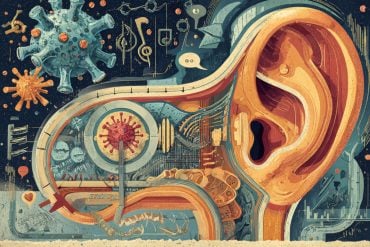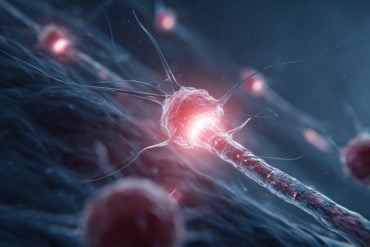Summary: Researchers are developing a more accessible means to monitor brain health.
Source: Simon Fraser University.
Simon Fraser University researchers hope that a brain vital-sign test becomes as routine during a doctor’s check-up as taking a blood pressure or heart rate measurement.
SFU researchers, led by professor Ryan D’Arcy with partners from the Mayo Clinic, Sheba Medical Centre in Israel and local high-tech company HealthTech Connex Inc., are developing a more accessible means to monitor brain health.
In a recent article published in the journal Frontiers in Neuroscience, the team introduces the world’s first advancement in physiology-based brain vital signs. Their discovery makes it possible to translate complex brainwaves into objective, practical and deployable brain vital signs, using longstanding brainwave technologies that have existed for nearly a century.
HealthTech Connex Inc. is currently developing the NeuroCatchTM platform to enable the highest quality recordings of the brain’s vital signs.
“The brain vital-sign framework described in Frontiers in Neuroscience represents the first step towards an easy way to monitor brain health,” says D’Arcy. “Potential applications are in concussion, brain injury, stroke, dementia and other devastating brain diseases and disorders.”
Vital sign measures are often used in clinics, hospitals and other care centres to assess the performance of various body systems.
Scientists in D’Arcy’s NeuroTech Lab, based in Surrey Memorial Hospital, have now developed a simple way to measure brain health over time by using non-invasive electrodes to track the brain’s electrical activity for key brain functions–in other words, the brain’s vital signs.
Researchers found that it is possible to monitor brain performance during auditory sensation, and basic attention and cognitive processing.
“We know brainwaves provide an objective physiological measurement of brain functions,” says D’Arcy, SFU’s BC Leadership Chair in Medical Technologies. “We’ve been working for the last 20 years to solve the major gap in terms of utilizing this for a rapid and accessible vital sign for brain function.”
Traditionally, brain function has been assessed only after trauma or disease has occurred and has relied heavily on subjective, behaviour-based assessments.
“However, tracking our brain’s vital signs is critically important for establishing a baseline for a person’s objective brain activity,” he adds, noting that in the event of injury or disease, it then becomes possible to evaluate if brain function changes, and whether treatments are effective.
“We describe the world’s first physiology-driven brain vital-sign measure allowing us to quantify brain vitality over time,” says Sujoy Ghosh Hajra, A PhD student working with D’Arcy and the paper’s lead author.

In the paper, researchers describe how their framework translates complex brainwave science into clinically accessible information and demonstrates successful measurement of brain vital signs in both younger and older adults. Their method identified age-related brain function changes that were not evident using traditional measures.
The paper has had significant hits–more than 1,000 views globally–which Ghosh Hajra says is a testament to the urgent need to quantify brain vitality.
Funding: This work was supported in part by Mathematics of Information Technology and Complex Systems (MITACS, Grant #IT03240), National Sciences and Engineering Council Canada (NSERC, Grant #298457-2009), and Canadian Institutes for Health Research (CIHR, Grant #CCI-109608).
Conflict of Interest: Several of the authors are associated with HealthTech Connex Inc. which may qualify them to financially benefit from the commercialization of a NeuroCatch™ platform capable of measuring brain vital signs.
Source: Marianne Meadahl – Simon Fraser University
Image Source: This NeuroscienceNews.com image is credited to Marianne Meadahl, SFU.
Original Research: Full open access research for “Developing Brain Vital Signs: Initial Framework for Monitoring Brain Function Changes Over Time” by Sujoy Ghosh Hajra, Careesa C. Liu, Xiaowei Song, Shaun Fickling, Luke E. Liu, Gabriela Pawlowski, Janelle K. Jorgensen, Aynsley M. Smith, Michal Schnaider-Beeri, Rudi Van Den Broek, Rowena Rizzotti, Kirk Fisher and Ryan C. N. D’Arcy1,2, in Frontiers in Neuroscience. Published online May 12 2026 doi:10.3389/fnins.2016.00211
[cbtabs][cbtab title=”MLA”]Simon Fraser University. “Could Brainwaves Be the Next Health Vital Sign?.” NeuroscienceNews. NeuroscienceNews, 2 June 2026.
<https://neurosciencenews.com/brainwaves-health-neuroscience-4358/>.[/cbtab][cbtab title=”APA”]Simon Fraser University. (2026, June 2). Could Brainwaves Be the Next Health Vital Sign?. NeuroscienceNews. Retrieved June 2, 2026 from https://neurosciencenews.com/brainwaves-health-neuroscience-4358/[/cbtab][cbtab title=”Chicago”]Simon Fraser University. “Could Brainwaves Be the Next Health Vital Sign?.” https://neurosciencenews.com/brainwaves-health-neuroscience-4358/ (accessed June 2, 2026).[/cbtab][/cbtabs]
Abstract
Developing Brain Vital Signs: Initial Framework for Monitoring Brain Function Changes Over Time
Clinical assessment of brain function relies heavily on indirect behavior-based tests. Unfortunately, behavior-based assessments are subjective and therefore susceptible to several confounding factors. Event-related brain potentials (ERPs), derived from electroencephalography (EEG), are often used to provide objective, physiological measures of brain function. Historically, ERPs have been characterized extensively within research settings, with limited but growing clinical applications. Over the past 20 years, we have developed clinical ERP applications for the evaluation of functional status following serious injury and/or disease. This work has identified an important gap: the need for a clinically accessible framework to evaluate ERP measures. Crucially, this enables baseline measures before brain dysfunction occurs, and might enable the routine collection of brain function metrics in the future much like blood pressure measures today. Here, we propose such a framework for extracting specific ERPs as potential “brain vital signs.” This framework enabled the translation/transformation of complex ERP data into accessible metrics of brain function for wider clinical utilization. To formalize the framework, three essential ERPs were selected as initial indicators: (1) the auditory N100 (Auditory sensation); (2) the auditory oddball P300 (Basic attention); and (3) the auditory speech processing N400 (Cognitive processing). First step validation was conducted on healthy younger and older adults (age range: 22–82 years). Results confirmed specific ERPs at the individual level (86.81–98.96%), verified predictable age-related differences (P300 latency delays in older adults, p < 0.05), and demonstrated successful linear transformation into the proposed brain vital sign (BVS) framework (basic attention latency sub-component of BVS framework reflects delays in older adults, p < 0.05). The findings represent an initial critical step in developing, extracting, and characterizing ERPs as vital signs, critical for subsequent evaluation of dysfunction in conditions like concussion and/or dementia.
“Developing Brain Vital Signs: Initial Framework for Monitoring Brain Function Changes Over Time” by Sujoy Ghosh Hajra, Careesa C. Liu, Xiaowei Song, Shaun Fickling, Luke E. Liu, Gabriela Pawlowski, Janelle K. Jorgensen, Aynsley M. Smith, Michal Schnaider-Beeri, Rudi Van Den Broek, Rowena Rizzotti, Kirk Fisher and Ryan C. N. D’Arcy1,2, in Frontiers in Neuroscience. Published online May 12 2026 doi:10.3389/fnins.2016.00211






